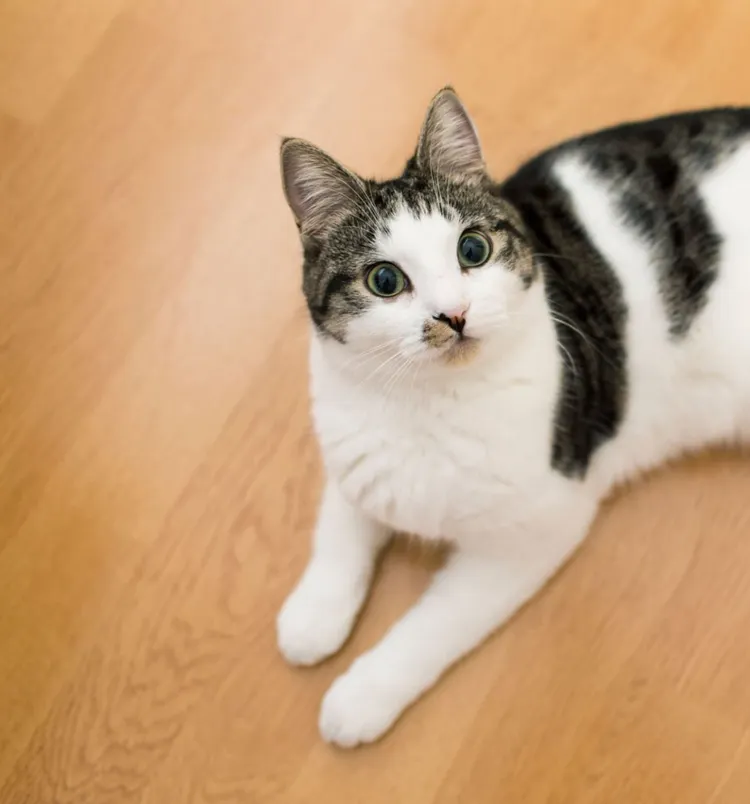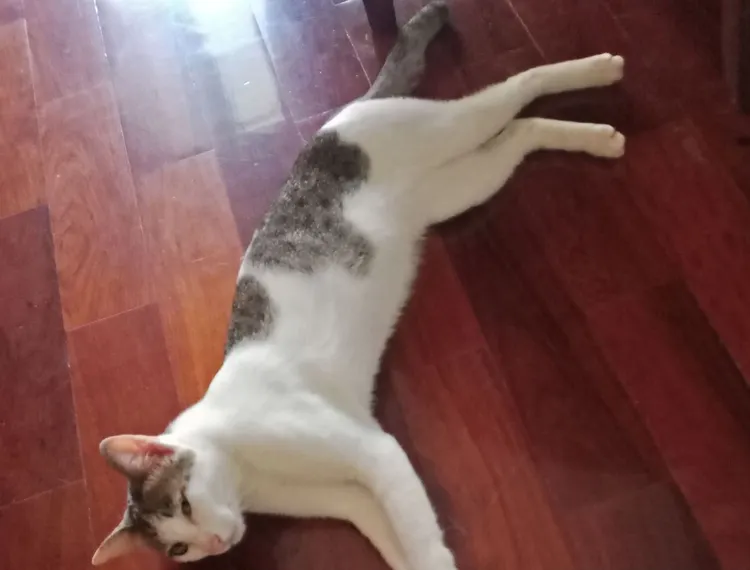Ever notice your cat lying down, seemingly relaxed, but their tail is twitching? It’s a fascinating sight—your furry friend may look calm, but their tail is sending you signals. As with most things cats do, tail-wagging is rarely as straightforward as it seems. Cats use their tails as a form of communication, and that wagging could mean a number of things, from contentment to irritation.
Unlike dogs, who often wag their tails as a sign of happiness, cats’ tail movements can express a wide range of emotions. If you’ve ever wondered why your cat wags its tail while lying down, you’re not alone! This guide will help you decode this intriguing behavior and give you a deeper understanding of your feline’s inner world.
What Does Tail Wagging Mean in Cats?
Cats use their tails to communicate in a subtle and nuanced way. The speed, direction, and rhythm of a tail wag can all convey different messages. To a cat owner, understanding these signals can help in responding to their cat’s needs or mood.
While a dog wagging its tail is typically a sign of happiness and excitement, in cats, the meaning of tail wagging is much more complex. A cat’s tail can show happiness, alertness, agitation, or even confusion. The context and the rest of the cat’s body language play a key role in interpreting what that wagging tail is really saying.
Now, let’s break down the various reasons your cat might wag its tail while lying down.
Reasons Cats Wag Their Tails While Lying Down
1. Relaxation with a Twist
Sometimes, a slow and gentle tail wagging can indicate that your cat is relaxed yet alert. Cats are creatures of vigilance, even when they appear to be at ease. If your cat is lying down, looking comfortable but gently wagging their tail, it could mean they’re mostly relaxed but still keeping an eye on their surroundings.
In this state, your cat is not stressed or agitated, but their tail movement shows they’re not entirely off-duty either. They might be enjoying some downtime but are still aware of any changes in their environment—perhaps the sound of you moving nearby or the sight of a bird outside the window.
2. Attention Seeking
Has your cat ever wagged their tail while staring directly at you? This is a clear signal that they want your attention. Cats are known for being independent, but they still crave interaction from their human companions. A gentle tail flick while lying down might be their way of saying, “Hey, don’t forget I’m here!”
This kind of tail movement is often accompanied by other signs, like your cat staring at you or making soft noises. They might want to be petted, fed, or just acknowledged. It’s their subtle way of getting your attention without demanding it outright.
3. Irritation or Annoyance
On the flip side, if your cat’s tail is wagging quickly and with more force, it could be a sign of irritation or annoyance. Cats are sensitive creatures, and they don’t hesitate to let you know when something is bothering them. When a cat is annoyed, their tail movement becomes sharper and more deliberate.
For example, if you’re petting your cat and their tail starts to flick faster, it might be a sign that they’ve had enough. The fast flicking of the tail can be your cat’s way of warning you to stop what you’re doing before they get more upset. Pay close attention to this type of tail wagging—it’s your cat’s way of telling you they’re overstimulated or uncomfortable.
4. Dreaming
Yes, cats do dream! And just like humans, their bodies can react to what’s happening in their dreams. If your cat is lying down and their tail is twitching while they’re asleep, they might be in a deep dreaming state. This is similar to when dogs twitch their paws or make noises while dreaming.
During the REM (Rapid Eye Movement) phase of sleep, cats can have dreams about hunting, playing, or interacting with their environment. Their tail might move in response to what they’re dreaming about. So, if you see your cat’s tail wagging while they snooze, it could just be their subconscious mind at work.
5. Focused or in Hunting Mode
Cats are natural hunters, and even indoor cats retain their hunting instincts. When a cat is intensely focused on something—such as a toy, bird, or even a dust particle—you might notice their tail flicking. This focused tail movement is common when they’re watching prey or gearing up for playtime.
If your cat is lying down but their eyes are locked on something and their tail is twitching, it means they’re focused and might be in “hunting mode.” Even if they’re not physically moving, their mind is sharp, and they’re planning their next move, whether it’s pouncing or just observing.

How to Read Your Cat’s Overall Body Language
Tail wagging is just one aspect of your cat’s communication, and it’s important to consider it along with their other body language signals. Here’s a quick guide on how to interpret your cat’s other physical cues:
1. Ear Position
- Forward ears: Your cat is alert, curious, or interested in something.
- Flat ears: A sign of fear, aggression, or overstimulation.
- Ears twitching: Your cat is irritated or paying close attention to something.
2. Eyes
- Slow blinking: A sign of trust and affection.
- Wide pupils: Your cat is excited, scared, or playful.
- Dilated pupils: This can indicate arousal, fear, or even pain.
3. Posture
- Lying on their back: This can be a sign of trust, especially if they expose their belly. However, it can also be a defensive posture.
- Arched back: A sign of aggression or fear.
- Relaxed body: If your cat is lying down with their paws tucked under them, it generally means they’re comfortable and calm.
4. Vocalization
- Purring: Often associated with contentment, but cats can also purr when they’re anxious or unwell.
- Meowing: Cats meow for attention, food, or to communicate something specific to their owner.
- Hissing or growling: A clear sign of fear or anger, typically a warning to back off.

Tail Wagging and Feline Emotions: Understanding Your Cat Better
Cats are complex, and understanding their emotions can take time and observation. Tail wagging while lying down can signal different things depending on the context, so it’s important to look at your cat’s entire body language and behavior. Whether your cat is relaxed, focused, irritated, or simply dreaming, their tail wagging is part of a larger story they’re trying to tell you.
Learning to interpret these subtle signals can strengthen your bond with your cat and help you respond to their needs more effectively. The next time you see your cat lying down with their tail wagging, take a closer look at their overall behavior and see if you can decode their message!
Cats wag their tails while lying down for many reasons, from signaling relaxation to asking for attention or expressing irritation. As a cat owner, being able to read these subtle cues will not only help you understand your furry friend better but also improve your communication with them. Cats may not be as expressive as dogs, but their tails tell a story—it’s up to us to pay attention and learn the language.



